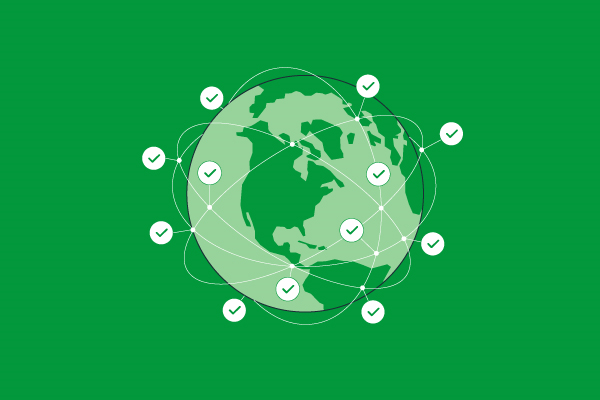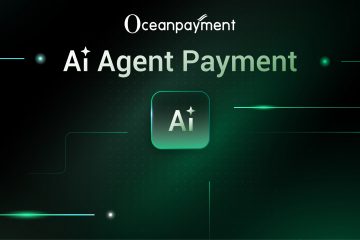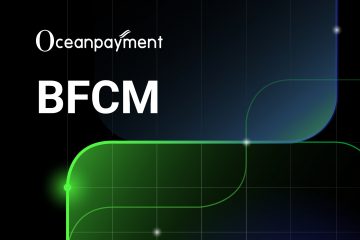With the increase in online shopping, businesses are increasingly looking towards the internet to expand their customer base and get more sales. To successfully expand into a wider market, it is essential for businesses to accept online payments. These payments are managed online as a result of the interaction between multiple involved stakeholders to facilitate the payment process for the banking company.
Understanding the working mechanism of online payments is essential to adapt to this digital era and shift towards a modern payment processing process.
How Online Payments Work – The Process
Before getting started with how online payment works, it is essential to have further context on the core stakeholders that are involved in online payment processing.
When it comes to processing online payments, whether that is through eCommerce, physical POS, or other methods, the primary stakeholders in the process are the customer, the middle technology, and the business.
The Business/merchant – To effectively accept online payments from consumers, it is essential for businesses to expand their service outreach to merchant banks or companies that facilitate the payment process and deposit the received amount in your account.
The Customer – For customers to procure goods and services from your business, they require online payment methods, including credit/debit cards, mobile wallets, or any other payment format that is accepted by the payment gateway integrated into your website. The customer’s bank approves the payment and sends the amount to your account.
Middle Technology – The middle technology facilitates the interaction between customers and businesses by managing the payments through the gateway. The payment gateway software manages the connectivity between the website’s shopping interface and the broader payment processing network.
The Conventional Payment Journey
- After the customer decides their preferred product or services on your website, they proceed to checkout and make a payment using their credit/debit card.
- The entire process is concluded in a few seconds, but the underlying mechanisms are essential to ensure the safety of the transaction.
- The payment information, including the credit card number and amount, is encrypted and authenticated by the processor to prevent fraud and malicious utilization.
- The sale authorization is confirmed by the credit-card issuing authority to check whether they have the funds and permissions required to make the purchase.
- The funds are then transferred to your merchant bank account, where you’re able to have access to your amount in a short time, depending on the policy of your bank. The approval of the sale could be associated with a limited-time reserve payment depending on the policies of your bank.



Payment Processing
As a business owner, it can be helpful to have a clear idea of the different steps that take place when a customer makes a payment to your business. There are two primary stages in payment processing; authorization and settlement.
Authorization
The authorization process is initiated once the customer makes the payment on your website using their credit/debit card. The information is pushed forward by the payment gateway in an encrypted forward to the payment processor. The payment processor checks with the issuing bank to ensure that the customer has enough funds/credit to pay for the requested purchase. The issuing bank confirms the status of the payment based on the approval/denial of the payment. The aforementioned steps result in the customer payment being confirmed to your business. The entire process is usually completed in a matter of seconds.
Settlement
The payment settlement process is the process of the business receiving the funds from the merchant account. The process usually begins with the card issuer sending the funds to your merchant bank with the amount being deposited into your bank account. Once the funds are received, you’re able to access them as soon as they are available. The settlement process can usually take a few days, depending on the mutual interaction between your bank and the customer’s bank. However, due to the nature of the transaction, you’re able to access the funds even before your bank receives them.
Interested in creating your online payment platform? Check Out Creating Online Payment Platforms.
The Cost of the Payments – Pricing
A key element of the payment processing equation is the cost of handling the payments. Every stakeholder in the transaction charges their own fee for managing the payments and supporting the process. Some of the core stakeholders in the process include the card-issuing bank, the credit card association, the payment processor, and your bank.
In every single sale transaction, you have to deal with the following costs in the form of fees.
- Interchange Fee – Charged as a percentage of the transaction amount; this amount allows the issuer to benefit from every processed transaction. Referred to as interchange, this fee depends on the industry niche, the purchase amount, and the type of credit card used in the purchase. There are over 300 different types of interchange fees currently present in the industry.
- Assessment Fee – The assessment fee is the fee charged by the credit card association to manage the payment and facilitate the transfer of payments across the network. This fee is usually another fixed percentage of the overall transaction volume.
- Merchant Bank Fee – Your bank conventionally also charges a percentage of the total amount to facilitate the transaction as well.
- Fixed Authorization Fee – This fee is a fixed dollar amount charged by the core payment processor to process the transaction. Whether the transaction is accepted, declined, or returned, this fixed fee is a key part of the equation when it comes to managing payments. This fee can also be associated with the monthly usage, general setup, and payment cancellation, depending on your chosen payment provider.
In a conventional pricing structure, the percentage-based fee is bundled together to charge you a single fixed rate for the transaction, while the transaction fee is separately mentioned based on the nature of your products and services.



Get Started with Online Payments
Oceanpayment helps you get started with online payments by helping you implement cutting-edge solutions on your digital platforms. We assess your personalized needs to devise purpose-built solutions and help you access fast payments at affordable fees.
To learn more about Ocean payment and our payment processing solutions, check out more at https://www.oceanpayment.com/.














Comments are closed.